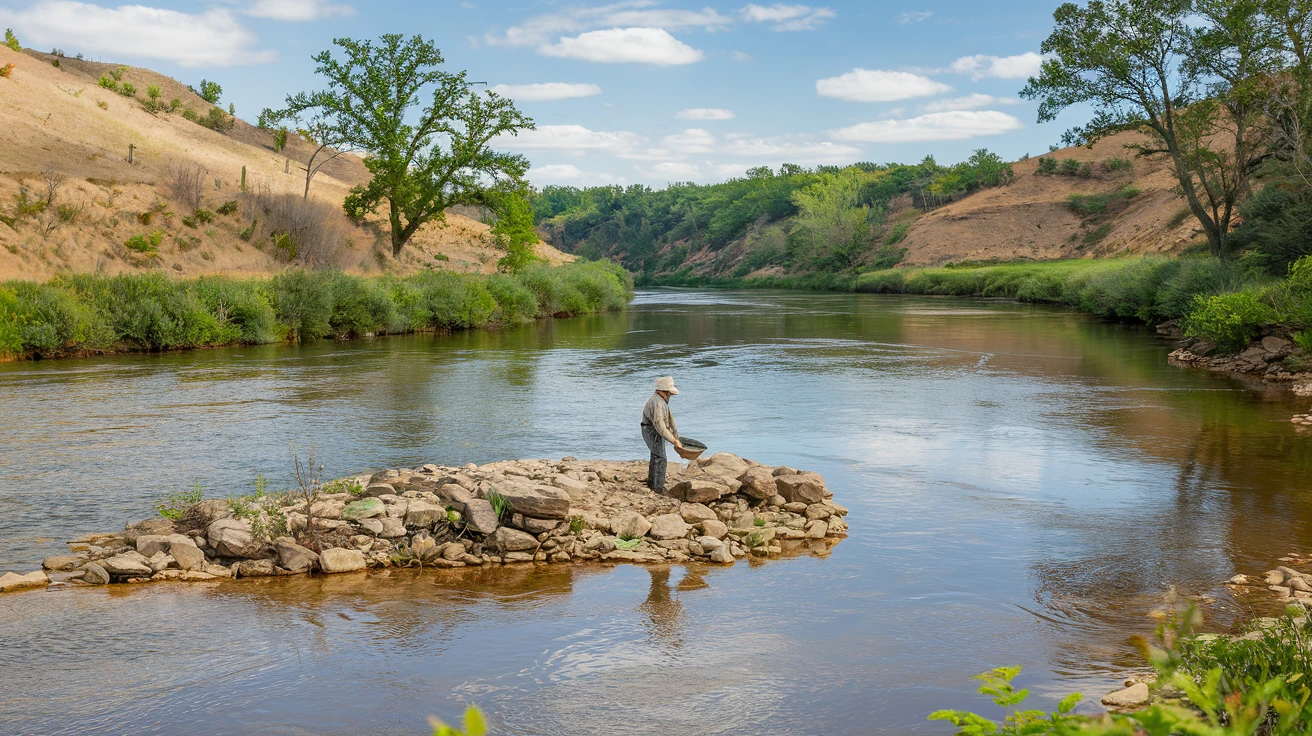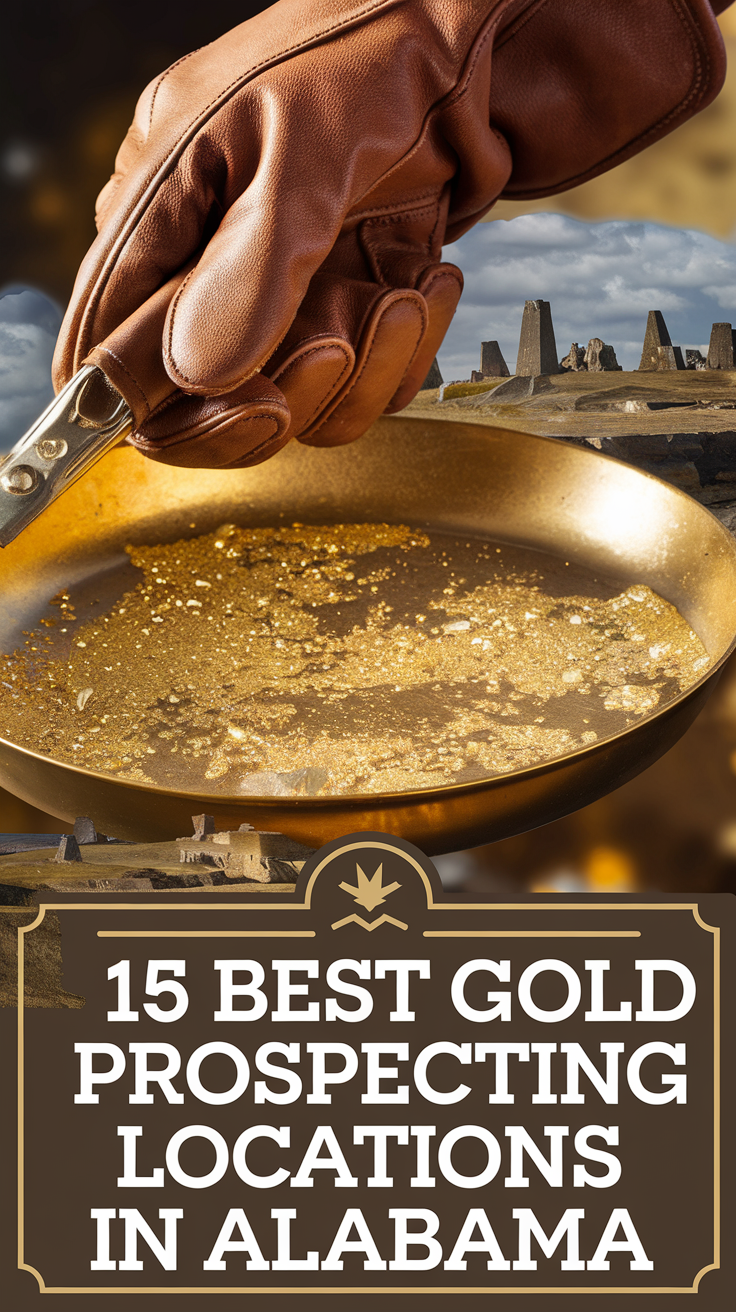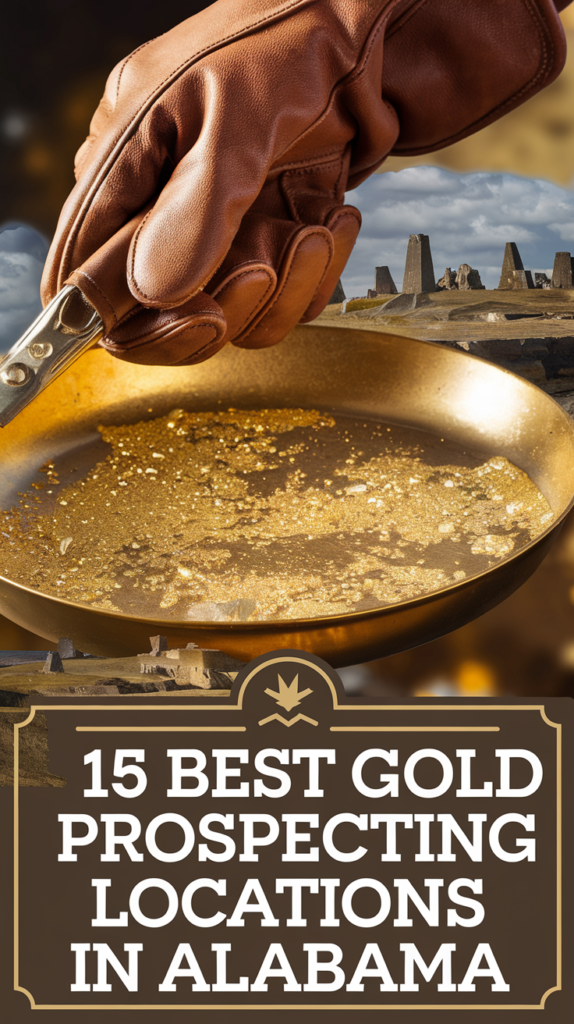
When you think of the American gold rush, California might be the first state that comes to mind. However, nestled in the heart of the Southeast, Alabama harbors its own golden secrets. As someone who’s spent countless weekends panning and prospecting in the Cotton State, I can tell you that Alabama’s gold-bearing regions offer both exciting opportunities and historical significance for modern-day prospectors. In this comprehensive guide, we’ll explore the 15 best locations for gold prospecting in Alabama, along with essential tips and techniques to make your golden adventures successful.
The Golden History of Alabama
Before we dive into specific locations, it’s crucial to understand Alabama’s rich gold mining heritage. The state’s first gold discoveries were made in the 1830s, coinciding with the Georgia Gold Rush. The gold belt, stretching from east-central Alabama into the northern regions, has produced significant amounts of placer and lode gold over the years.
Historical Production Figures
| Time Period | Gold Production (oz) | Primary Mining Areas |
|---|---|---|
| 1830-1850 | 50,000+ | Arbacoochee District |
| 1851-1900 | 75,000+ | Hog Mountain District |
| 1901-Present | 25,000+ | Various Locations |
North Alabama Gold Spots (Locations 1-5)
1. Cleburne County Gold Fields
The historic Arbacoochee district in Cleburne County stands as one of Alabama’s most productive gold regions. I’ve personally found several small nuggets here using a simple gold pan and sluice box. The area around Chulafinnee Creek is particularly promising, especially after heavy rains.
2. Tallapoosa River System
This extensive river system offers multiple access points for prospectors. The best spots are typically found near old mining operations, where the river bends create natural gold traps.
3. Gold Ridge District
Located in Randolph County, this area has yielded both placer and lode gold. Modern prospectors should focus on the creek beds and ancient river channels.
4. Blue Creek Mining Area
This lesser-known spot in Clay County has been producing gold since the 1840s. The creek’s gradual grade makes it ideal for pan and sluice operations.
5. Hillabee Creek
Flowing through Clay and Tallapoosa counties, Hillabee Creek offers excellent opportunities for recreational prospecting, particularly in its slower-moving sections.
Central Alabama Treasures (Locations 6-10)
Essential Equipment for These Locations
- Gold pan and classifier
- Sluice box
- Rock hammer and pick
- Metal detector (for nugget hunting)
- GPS device
6. Hog Mountain District
Once Alabama’s largest gold producer, this area still yields gold to patient prospectors. Focus on the weathered quartz veins and surrounding creeks.
7. Smith’s Creek
This tributary of the Tallapoosa River contains numerous gold-bearing gravel bars. I’ve had particular success here during late spring when water levels are optimal.
8. Gold Branch
Appropriately named, this location in Tallapoosa County continues to produce fine gold and occasional small nuggets.
9. Crooked Creek
The creek’s multiple bends create perfect conditions for gold deposition. Look for black sand deposits, as they often indicate the presence of gold.
10. Devil’s Backbone
This historically rich area requires more effort to access but can reward prospectors with both placer and lode gold discoveries.
Southern Alabama Prospects (Locations 11-15)
Best Seasons for Prospecting
| Season | Conditions | Recommended Locations |
|---|---|---|
| Spring | Moderate water levels | All creek locations |
| Summer | Low water, hot | Shaded creek areas |
| Fall | Variable conditions | Open areas, hillsides |
| Winter | High water, cold | Sheltered locations |
11. Little Cahaba River
While not as rich as northern locations, this river has produced interesting finds, particularly after storm events.
12. Mulberry Creek
This creek’s ancient terraces occasionally yield placer gold deposits worth investigating.
13. Pine Tucky Creek
A lesser-known location that’s produced consistent, if modest, amounts of fine gold.
14. Turkey Heaven Creek
The creek’s bedrock exposures create natural gold traps worth prospecting.
15. Weogufka Creek
This location requires more research but has yielded interesting results for dedicated prospectors.
Conclusion
Alabama’s gold prospecting locations offer something for everyone, from beginners to experienced miners. Remember to always obtain necessary permits, respect private property, and follow responsible prospecting practices. The thrill of finding your first piece of Alabama gold is an experience you’ll never forget, and these 15 locations provide excellent starting points for your golden adventure.
Key Takeaways
- Northern Alabama typically offers the best gold prospecting opportunities
- Always check local regulations and obtain necessary permits before prospecting
- The best time for prospecting is usually spring and fall seasons
- Proper equipment and technique are crucial for successful gold hunting
- Research historical mining areas for better chances of success
Frequently Asked Questions
Do I need a permit to prospect for gold in Alabama?
Yes, you typically need permits for prospecting on public lands. Always check with local authorities and obtain necessary permissions before starting.
What’s the best time of year to prospect for gold in Alabama?
Spring and fall offer the most favorable conditions, with moderate temperatures and optimal water levels.
Can I keep the gold I find?
Yes, if you’re prospecting legally with proper permits, you can keep what you find. However, quantities may be limited by regulations.
What basic equipment do I need to start gold prospecting?
A gold pan, classifier, shovel, and proper safety gear are essential for beginners.
Is it possible to find nuggets in Alabama?
Yes, though rare, small nuggets have been found, particularly in the northern regions of the state.
Are metal detectors allowed for gold prospecting?
Metal detectors are generally allowed on public lands with proper permits, but always verify local regulations.
How deep should I dig when prospecting?
Focus on the first 2-3 feet of material, particularly targeting bedrock areas and natural gold traps.
What are the signs of gold-bearing areas?
Look for black sand, quartz outcroppings, and areas where water flow naturally slows down.
Can I prospect on private property?
Only with explicit permission from the property owner, preferably in writing.
What’s the average size of gold found in Alabama?
Most finds are fine gold and small flakes, though occasional larger pieces are discovered.


